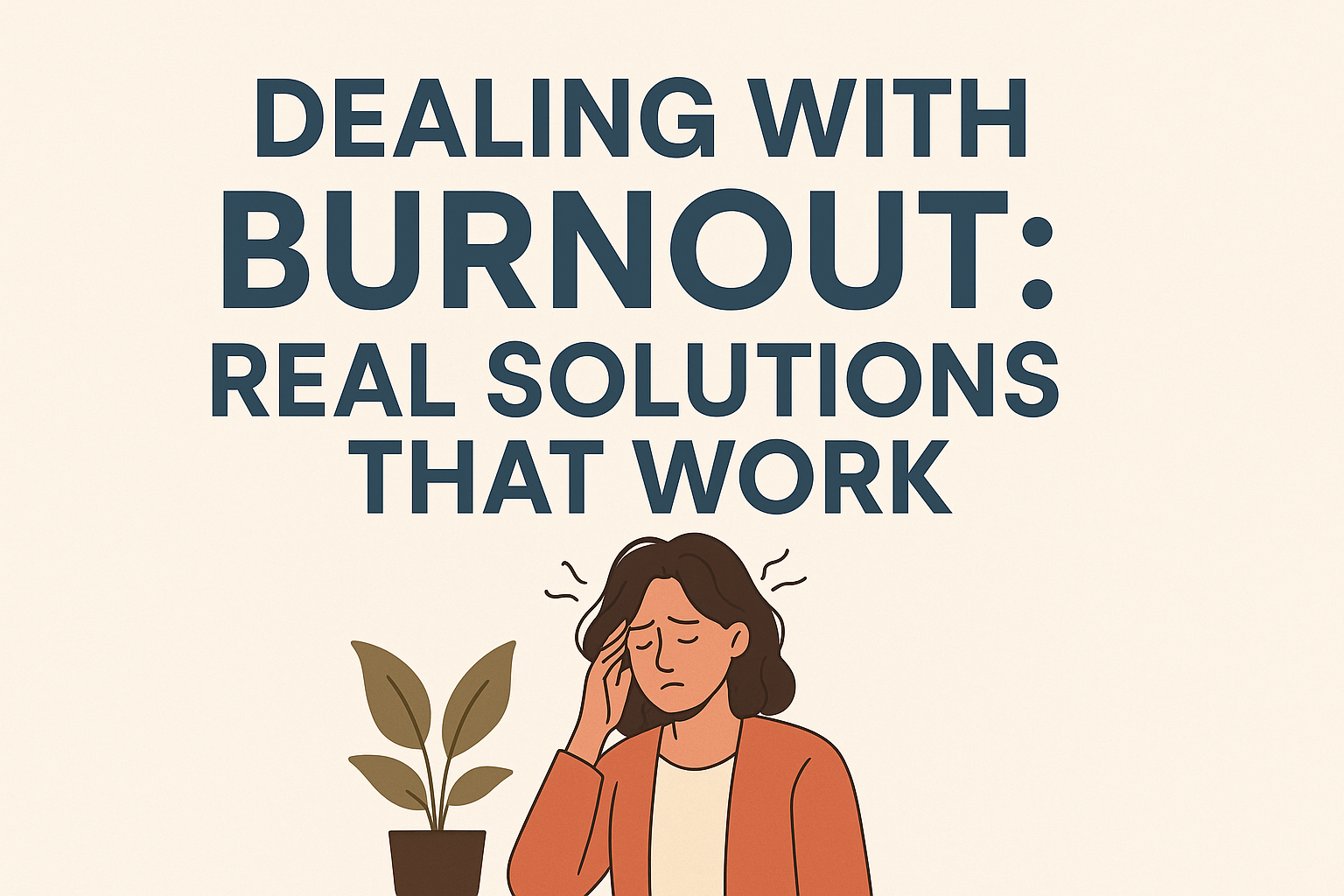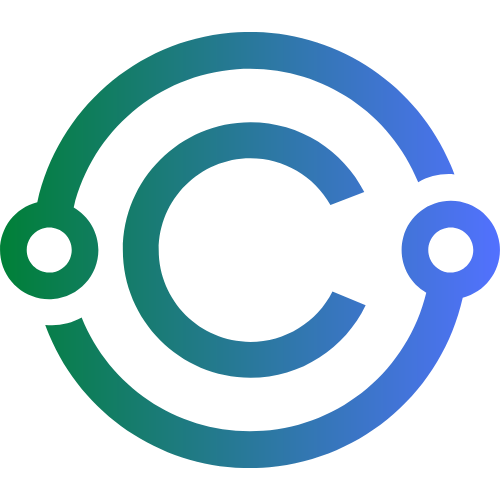Dealing with Burnout: Real Solutions That Work

You’re exhausted but can’t sleep. You feel overwhelmed but still feel guilty for taking a break. Your to-do list never ends, but your motivation has flatlined.
That’s not just fatigue—it’s burnout.
In 2025, burnout is no longer just a buzzword. It’s a widespread workplace epidemic affecting employees, entrepreneurs, freelancers, and leaders alike.
This guide offers real-world, evidence-based solutions—not fluffy advice—to help you:
- Identify the early signs of burnout
- Understand root causes
- Create a personalized recovery plan
- Prevent relapse and build resilience
- Learn from others who’ve been there
Let’s help you stop surviving and start restoring.
1. What Is Burnout? (And What It’s Not)
Defined by the World Health Organization, burnout is:
“A syndrome resulting from chronic workplace stress that has not been successfully managed.”
It’s not laziness. It’s not weakness. It’s a breakdown in the system and self-care needed to sustain performance.
3 Core Symptoms:
- Emotional exhaustion
- Depersonalization/cynicism
- Reduced sense of personal accomplishment
Quiz Tool: MindTools Burnout Self-Test
2. Early Warning Signs You Shouldn’t Ignore
✅ Constant fatigue—even after rest
✅ Trouble focusing or making decisions
✅ Irritability with coworkers or family
✅ Physical symptoms (headaches, gut issues, insomnia)
✅ Losing passion for work you used to enjoy
Quote: “Burnout doesn’t start with a breakdown. It starts with quiet resignation to being always ‘on.’”
3. What Causes Burnout in 2025?
Burnout isn’t just about too much work—it’s about the imbalance between demands and recovery.
Top Causes:
- Lack of control over workload or schedule
- Poor manager-employee communication
- Unclear job expectations
- Toxic or disconnected work cultures
- Overcommitment to goals or “hustle” mentality
Read more: Setting Boundaries at Work Without Guilt
4. The First Step: Acknowledge and Pause
You can’t recover while still sprinting.
✅ Acknowledge the burnout ✅ Take a step back—whether that’s a mental health day, vacation, or reassessment of current tasks ✅ Use the pause to reflect—not just escape
Tool: Calm and Insight Timer for guided breathing or body scans
5. Rebuild Your Energy With the 4 Types of Rest
Not all rest is created equal. According to Dr. Saundra Dalton-Smith, we need:
- Physical Rest – Sleep, naps, stretching, massage
- Mental Rest – Breaks from problem-solving or decision-making
- Emotional Rest – Time where you don’t need to “perform”
- Creative Rest – Nature, art, or awe-inspiring spaces
Tip: Schedule these weekly. Rest must be intentional, not passive.
6. Restructure Your Workload for Sustainability
✅ Delegate or eliminate low-impact tasks
✅ Prioritize with the Eisenhower Matrix (urgent vs. important)
✅ Limit back-to-back meetings—protect deep work time
Tool: Use Clockwise to auto-schedule focus time in your calendar
7. Reinforce Boundaries (Without Guilt)
Burnout often lives where boundaries don’t.
✅ Communicate work hours clearly
✅ Say no with grace: “I’d love to help, but I’m at capacity this week.”
✅ Silence non-urgent notifications during recovery windows
Template: “To sustain my energy, I’m limiting after-hours emails. I’ll respond during my working hours.”
8. Fuel Your Brain and Body for Recovery
Burnout recovery isn’t just mental—it’s physical too.
✅ Eat nutrient-dense meals, not just caffeine and sugar
✅ Hydrate regularly (aim for 2–3L per day)
✅ Move your body (even a 10-min walk helps)
Resource: Precision Nutrition’s Recovery Tips
9. Rediscover Purpose and Control
When we lose our “why,” burnout thrives.
✅ Reflect: What parts of your work energize you?
✅ Reframe tasks: How do they contribute to a bigger goal?
✅ Set one small win each day that you control fully
Tool: Use Notion for a daily gratitude and purpose journal
10. Seek Support (You’re Not Alone)
✅ Talk to a therapist or coach
✅ Join support communities (e.g., Reddit r/burnout, LinkedIn peer groups)
✅ Open up to trusted colleagues or mentors
Quote: “Vulnerability isn’t weakness. It’s a path to rebuilding trust—with others and yourself.”
11. Prevention: Build Burnout Resilience into Your Routine
✅ Take microbreaks (5 minutes every hour)
✅ Celebrate small wins weekly
✅ Build a “restore list” (people, activities, habits that refill you)
Monthly Check-In Questions:
- Am I energized or drained by my calendar?
- Where do I need to say no?
- What do I want to feel more of next month?
12. Case Study: How Adeel Recovered and Rebuilt After Burnout
Background: Adeel, a senior operations lead in Canada, hit peak burnout during 2023. He was managing global teams, sleeping 4–5 hours, and constantly checking messages.
Symptoms:
- Panic attacks
- Brain fog
- Emotional detachment from family
What He Did:
- Took a 10-day medical leave (with HR support)
- Hired a therapist and career coach
- Delegated 30% of his workload
- Re-negotiated his schedule to include no-meeting Fridays
- Started daily journaling and 30-min walks
Outcome:
- Returned with clarity, confidence, and a new role that focused on strategy (less firefighting)
- Leads burnout-prevention workshops internally
Quote: “Burnout forced me to redesign my life—and I’m better for it.”
13. Final Thoughts: You’re Not Lazy—You’re Running on Empty
Burnout doesn’t mean you’re weak. It means you’ve been strong for too long without refueling.
In 2025, dealing with burnout means:
- Prioritizing energy over hustle
- Saying no with respect (for yourself and others)
- Designing work around sustainability—not survival
Because when you protect your energy, you protect your creativity, your joy, and your future.
Let this blog be your permission slip—to rest, to reset, and to rebuild.

